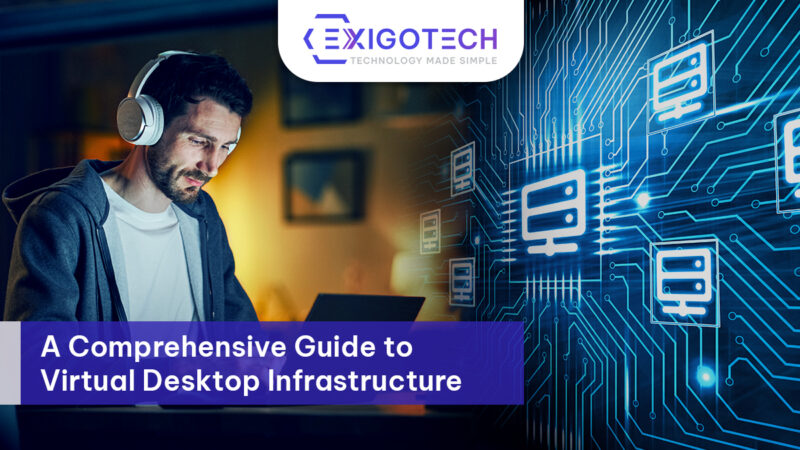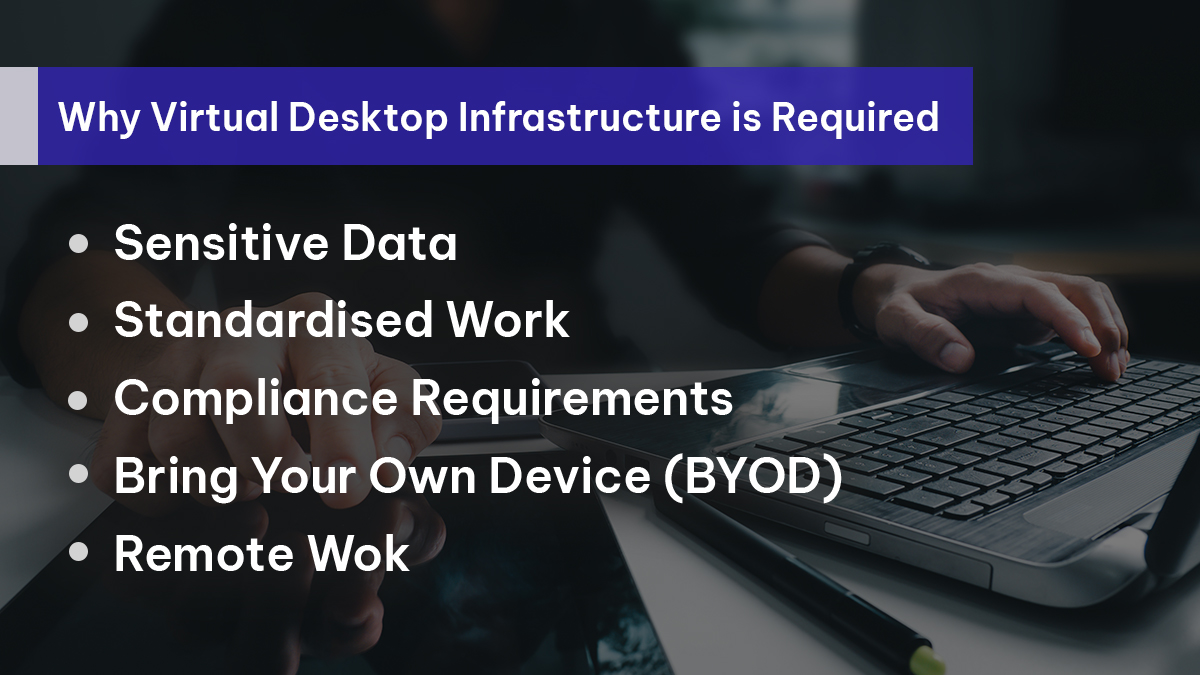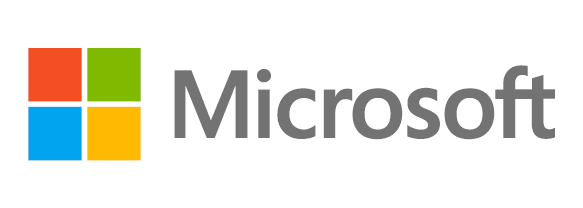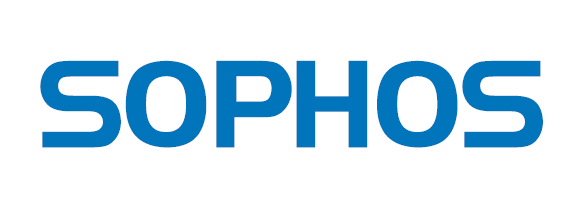Most of the businesses these days are constantly looking to improve their operations and boost productivity. Virtual desktop infrastructure is one solution that helps businesses to enhance overall business productivity. In an era where technology continues to revolutionise the way businesses work, Virtual desktop infrastructure emerges as a game-changer, reshaping the landscape of remote work, productivity, and IT management. VDI allows businesses to move away from traditional desktop setups to gain the flexibility to access their personalised desktops from any device with an internet connection.
By centralising computing resources in data centres and delivering desktop environments over a network, VDI streamlines management, enhances security, and enables scalability for businesses. This technology has sparked innovations, allowing individuals and organisations to optimise their workflows, improve productivity, and adapt to evolving workplace demands. Our blog aims to explore the various aspects of virtual desktops and provide in-depth information and the benefits of adapting to this rapidly evolving technology.
What is Virtual Desktop Infrastructure (VDI)?
A virtual desktop represents an environment that has been virtualised so that users may access and manage their desktops remotely, separating the hardware from the software. In simple words, it provides users with a virtualised form of their usual desktop environment. This means that the desktop environments run on a central server, either in a data centre or in the cloud. When a user needs a working environment on their computer, it is provided by the host server over a network. The concept of virtual desktops has revolutionised the way we interact with digital interfaces and has become an essential component of modern computing.
With the implementation of a virtual desktop environment, employees can access their personalised desktops from anywhere with an internet connection. There is no need to rely on traditional desktop setups. VDI eliminates the need to set up individual desktop work environments for each user, saving time and effort. The centralised system of VDI simplifies the ongoing management of desktops and enhances security against multiple cyberattacks. Virtual desktops also maintain a consistent user experience across platforms as they offer the flexibility to work from anywhere, using any device.
The Layered Structure of a Virtual Desktop Infrastructure (VDI) Solution
Understanding the layered structure of a virtual desktop infrastructure solution is crucial for successfully implementing and maintaining an efficient virtual desktop environment. Each layer plays a vital role in delivering a secure, flexible, and user-friendly computing experience to businesses and their employees.
- Hardware Layer is at the bottom of the VDI stack, which consists of servers, storage devices, and networking equipment. These components work together to support the virtualisation of desktop environments and ensure reliable performance and scalability.
- Hypervisor Layer is a crucial component that enables the creation and management of virtual machines (VMs). The hypervisor allocates the necessary resources to each VM and facilitates the smooth running of multiple virtual desktops on a single physical server.
- The virtualisation layer is responsible for creating and managing virtual desktops as it allows users to access their desktop environments from any device with an internet connection. It establishes a connection between the host and client, and it also handles user requests for starting a new session.
- The last layer is the computers and workstations. These devices are often thin clients, which means they don’t need powerful processors and expensive hardware features since the actual computing power is provided centrally in the data centre. This helps reduce the organisation’s hardware acquisition costs.
Persistent vs. non-persistent VDIs
There are two basic variants of setting up a VDI environment: persistent VDI and non-persistent VDI.
Persistent VDIs
A persistent VDI offers the advantage of retaining all user changes to their desktop. Users can log out and log back in later to find their working environment as they left it. This variant is well-suited for user types like developers and IT specialists who require high levels of personalisation for their desktop environment. Persistent VDIs can be costlier to operate because of their technical requirements and increased storage space.
Non-persistent VDIs
Non-persistent VDIs do not retain any customisations made to the desktop environment after a user session ends. However, they are easier and more cost-effective to operate since user data does not need to be stored temporarily. Non-persistent VDIs are well-suited for industries with repetitive workflows, like call centres, retail, or field staff.
Why Virtual Desktop Infrastructure is Required
Virtual desktop infrastructure is particularly suitable for certain needs and purposes.
-
Sensitive Data
Organisations operating in the sector where they process large amounts of sensitive data are required to adhere to strict legal requirements. The use of a virtual desktop infrastructure in these organisations helps them protect sensitive data by preventing its storage on employees’ devices. It ensures the security of sensitive information.
-
Standardised Work
Organisations having standardised IT processes like creating customer profiles or support requests must use VDI solutions. Non-persistent VDIs are a great fit for this because they are speedy and don’t burden the client computer much.
-
Compliance Requirements
Implementing compliance requirements in large companies can be challenging, but VDIs provide a solution by centralising important specifications at the server level and delivering them in a standardised manner.
-
Bring Your Own Device (BYOD)
An increasing number of employees are utilising their personal devices for work. VDI facilitates the “Bring Your Own Device” (BYOD) trend, while also allowing for a clear distinction between personal and corporate data.
-
Remote Work
VDI allows employees to work remotely from any location, especially with cloud-based models like Azure Virtual Desktop. Only the internet-enabled device and the login information for the VDI service are required to start the remote work.

Looking to Transform your Work Environment?
Get in touch with us to enhance security, streamline IT management, and enable seamless collaboration with Virtual Desktop Infrastructure.
Top 6 Benefits of Virtual Desktop Infrastructure
Virtual desktop infrastructure has revolutionised the way businesses operate by providing a flexible and secure computing environment. By moving desktops to a centralised server, VDI offers numerous benefits that traditional desktop setups simply cannot match. Let’s explore the top 6 benefits of virtual desktop infrastructure and how it can transform your business.
✔ Less Administrative Effort
Maintaining a company’s IT infrastructure requires significant effort which can occupy the IT department and redirect resources away from other vital projects. Using a VDI solution streamlines workstation management since they are centrally controlled in the cloud. This makes it easy to quickly implement changes, like introducing new CRM software, across the entire organisation.
✔ Less Hardware Costs
Virtual desktops are computers with low hardware requirements, allowing older machines to be used for longer without needing upgrades or replacements. Furthermore, users can effortlessly use their own devices to access the VDI solution, eliminating the need to buy new hardware. It eventually lowers the hardware cost for organisations.
✔ Protection Against Device Loss
Imagine if an employee lost their smartphone or had their system stolen. This would be a major security breach because all the data on the device would now be in the hands of someone unauthorised. VDI eliminates this danger as it stores all data centrally on the server in the cloud instead of the local device.
✔ Scalability
Cloud-based VDI allows for the quick creation of new users who can start working immediately. Additionally, unnecessary users can be removed as needed, such as during seasons with less demand for desktop work environments. In traditional desktop setups, these modifications result in periods of inactivity, but VDI does this job very quickly and efficiently.
✔ Transparent Cost Structures
Unlike traditional desktop setups, VDI allows businesses to have a clearer understanding of their IT expenses. With VDI, organisations can reduce hardware costs by utilising repurposed devices instead of purchasing individual desktop computers. Additionally, VDI often offers scalable subscription models, allowing businesses to pay for the exact number of virtual desktops they need, resulting in cost predictability and potential savings.
✔ Better Protection of Personal Data
With VDI, sensitive information is stored and processed on centralised servers, rather than individual devices. This centralised approach enhances data security by minimising the risk of data breaches or loss. VDI solutions often include robust security measures, such as data encryption, access controls, and regular backups, ensuring that personal data remains protected from unauthorised access.
Implement a VDI Solution with Exigo Tech: Your go-to Partner!
While virtual desktop infrastructure offers numerous benefits to your business, it is important to ensure proper implementation by following best practices. It is critical to utilise a specialised managed services provider to assist you in selecting and implementing the appropriate solution.
This is where Exigo Tech can help you in maximising the advantages of virtual desktop infrastructure. The experts at Exigo Tech will guide you through the entire VDI process. How we proceed:
- First, we analyse your current IT infrastructure and create a plan to shift to the virtual desktop. We have vast experience in implementing virtual desktops for different industries and company sizes. We also optimise the cost structure based on your specific needs.
- Then, we carry out the practical implementation of the virtual desktop. We know how to integrate or repurpose existing IT infrastructure and ensure the smooth introduction of the VDI system. After implementation, we help your employees to quickly accept the new solution and ensure efficient change management.
- We understand that your workforce may face challenges or queries with new solutions. Hence, we offer personalised support and respond quickly and flexibly to your problems. We remain committed to ensuring a successful transition.
Contact us now at or call us at 1300 EXIGOTECH (394 468) for a free consultation on Virtual Desktop Infrastructure.

Ready to Optimise Your Workplace with Virtual Desktop Infrastructure?
Let us handle your VDI needs, ensuring seamless operations while you focus on propelling your business forward. Experience efficient solutions and enhanced productivity with our expertise.
 Australia
Australia Singapore
Singapore Philippines
Philippines India
India Vishnu Patel | Dec 22, 2023
Vishnu Patel | Dec 22, 2023










